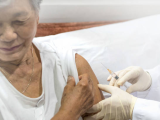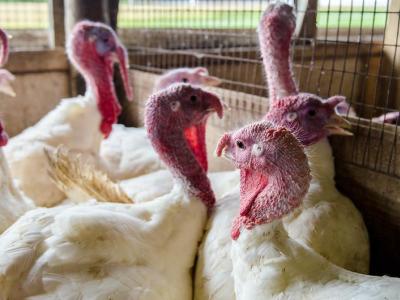Editor's note: The second paragraph of this story was revised on Sep 24 to correct an error. On the basis of information from ProMED-mail (published by the International Society for Infectious Diseases), the original version said it was unusual for the southern hemisphere vaccine composition to be the same as the preceding northern hemisphere vaccine. A later ProMED-mail posting made clear that this is not unusual.
Sep 23, 2008 (CIDRAP News) – The World Health Organization (WHO) has recommended that influenza vaccines for the southern hemisphere's 2009 flu season be based on the same three viral strains as this year's vaccines.
The recommendation also mirrors the WHO's recommendation for the northern hemisphere's 2008-09 flu season, which is not unusual, according to WHO records. A review of past WHO vaccine composition recommendations, which started in advance of the northern hemisphere's 1998-1999 flu season, shows that the southern hemisphere recommendation matched the preceding northern hemisphere recommendation four other times: in 1999, 2002, 2003, and 2007.
Each September the WHO analyzes the circulating flu strains before selecting the ones to include in the southern hemisphere's vaccine for the next flu season, which typically runs from May through October. The WHO does the same for the northern hemisphere each February. The 6-month interval between the strain recommendation and the start of the next flu season gives manufacturers time to grow the viruses in chicken eggs and formulate them into trivalent (three-strain) vaccines.
The WHO's flu vaccine recommendations for the southern hemisphere for next season include:
- For the A/H1N1 component, a strain similar to A/Brisbane/59/2007
- For the A/H3N2 component, a strain similar to A/Brisbane/10/2007
- For the B component, a strain similar to B/Florida/4/2006
The WHO said influenza activity this year in the southern hemisphere has been mild. In Africa, H1N1 viruses caused most outbreaks, but in South America, H1N1 and B viruses cocirculated and were responsible for outbreaks. Countries in the Oceana region reported outbreaks from H3N2 and B viruses.
As reported previously, H1N1 viruses have shown increased resistance to the antiviral drug oseltamivir (Tamiflu) in a growing number of countries, the WHO said. Most were in the Brisbane/59/2007 clade, but a few A/Hong Kong/2652/2006 clade viruses showed resistance, as well. The percentage of resistant viruses ranged from 0% to 100% among different countries. Both clades showed sensitivity to zanamivir. The WHO said it did not detect any oseltamivir-resistant H3N2 or B viruses.
The findings strengthen a trend that that was first observed last January in Norway and later in many other countries. Public health officials are concerned about increased resistance to oseltamivir, because many countries have stockpiled the drug for use in case the H5N1 avian influenza virus evolves into a human pandemic strain.
The proportion of H3N2 viruses that showed resistance to the M2 inhibitors amantadine and rimantadine, two older antiviral drugs, remained very high, the WHO reported. However, the proportion of H1N1 viruses resistant to the older drugs varied from country to country. In general, Brisbane/59/2007 clade viruses were sensitive to M2 inhibitors, while those from the A/Hong Kong/2652/2006 clade showed resistance.
In 2006, after the dominant circulating flu strains in the United States showed unexpectedly high rates of resistance to M2 inhibitors, the Centers for Disease Control and Prevention advised clinicians to stop prescribing them and instead use the newer antivirals, oseltamivir and zanamivir, which are both neuraminidase inhibitors.
See also
Sep 22 WHO statement on 2009 southern hemisphere influenza vaccine
WHO report on recommended composition of 2009 southern hemisphere flu vaccine
Aug 25 CIDRAP News story "H1N1 viruses growing more resistant to Tamiflu"


















